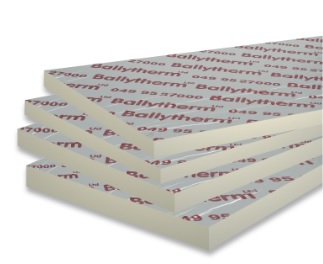Cavity walls, with two skins of masonry separated by an empty space, came into widespread use in the 1920s. They were designed to prevent the passage of moisture from the outside to the inside of the building, and thus stop dampness occuring.
The Introduction Of Insulation
In the 1970s, insulation began to be introduced into cavities in order to retain heat. This was usually by injecting foam, polystyrene beads or mineral wool fibre into holes drilled into the outer wall. While this method is fine in some areas, it’s not suitable for properties in exposed locations such as the coast or at high levels, as it can lead to moisture ingress from wind-driven rain penetrating the outer leaf of the wall. Injecting insulation means it can also be difficult to ensure even coverage of the entire wall surface. Plus, problems have developed over time, with some early types of injected insulation slumping down to the bottom of the cavity, leaving the upper parts of the wall uninsulated.

By the mid 1990s, cavity insulation was required by the building regulations in all new properties. This led to some different methods being adopted in order to insulate more effectively and avoid some of the problems discussed above. Rather than injecting insulation, adding it at the build stage means it can be fitted in the form of rigid mineral wool slabs, from brands such as Isover. The slabs are inserted into the cavity as the house is built. This has the advantage of ensuring even coverage of the wall surface with no risk of cold spots. It also means that in exposed areas, it’s possible to install insulation against the inner leaf of the wall whilst still leaving an air gap to the outer wall. This means you can get the benefits of insulation while still protecting the property from the effects of wind-driven rain.
The Advantages Of Cavity Wall Insulation
The main advantage of cavity insulation is to retain heat. It’s estimated that up to a third of a house’s heat can be lost through uninsulated walls, so making sure your walls are insulated can help cut your energy bills. there are other benefits too, such as noise insulation which can be provided by products such as Isover acoustic rolls. These are ideal for use in developments such as flats, in order to cut the amount of noise transmitted to adjacent properties.

In addition to mineral wool, there are rigid insulation boards such as Ballytherm Polyiso available. These can be used for walls and floors, so they’re ideal for both domestic and commercial applications. They’re thinner than other options, so are ideal where you still need to leave an air gap. This type of board can also be used to insulate solid walls, by fitting the boards between timber battens on the inner surface.
